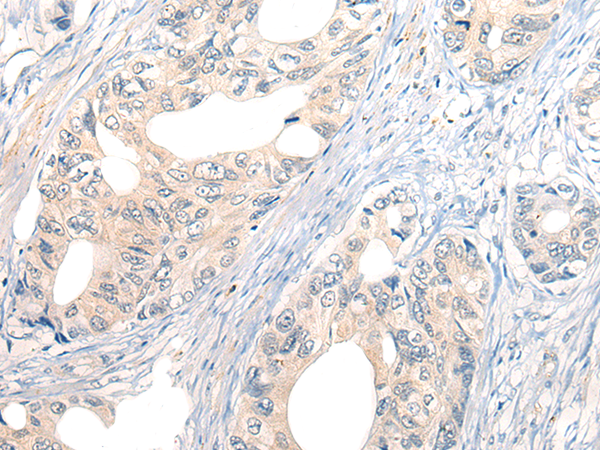NOG Polyclonal Antibody
For reference only. Please follow the manual included in your kit for instructions.
Catalog Number
RD217854A
Product Name
NOG Polyclonal Antibody
Catalog Number
RD217854A
Clonality
Polyclonal
Purification Method
Antigen affinity purification
Isotype
IgG
Host
Rabbit
Background
NOG (Noggin) is a Protein Coding gene. Diseases associated with NOG include Tarsal-Carpal Coalition Syndrome and Brachydactyly, Type B2. Among its related pathways are Mesodermal Commitment Pathway and Differentiation Pathway. GO annotations related to this gene include protein homodimerization activity and cytokine binding.The secreted polypeptide, encoded by this gene, binds and inactivates members of the transforming growth factor-beta (TGF-beta) superfamily signaling proteins, such as bone morphogenetic protein-4 (BMP4). The protein appears to have pleiotropic effect, both early in development as well as in later stages. It was originally isolated from Xenopus based on its ability to restore normal dorsal-ventral body axis in embryos that had been artificially ventralized by UV treatment. The results of the mouse knockout of the ortholog suggest that it is involved in numerous developmental processes, such as neural tube fusion and joint formation. Recently, several dominant human NOG mutations in unrelated families with proximal symphalangism (SYM1) and multiple synostoses syndrome (SYNS1) were identified; both SYM1 and SYNS1 have multiple joint fusion as their principal feature, and map to the same region (17q22) as this gene.
Immunogen Information
Immunogen
Synthetic peptide of human NOG
Swissprot
Q13253
Synonyms
NogNOGGNogginSYM 1SYM1Symphalangism 1 (proximal)Synostoses (multiple) syndrome 1SYNS 1SYNS1
Gene Accession
NP005441
Applications
Reactivity
Human, Mouse
Tested Applications
IHC,ELISA
Conjugation
Unconjugated
Dilution
IHC 1:25-1:100, ELISA 1:5000-1:10000
Concentration
1.9 mg/mL
Storage Buffer
PBS with 0.05% NaN3 and 40% Glycerol, pH7.4
Storage Instructions
Store at -20°C. Avoid freeze / thaw cycles.

